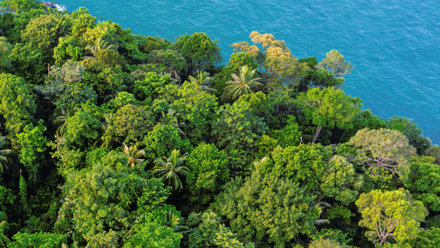Record temperatures bring new marine life to UK
As sea surface temperatures gradually rise, surveyors are noticing dramatic changes in the mix of wildlife around UK coasts.
Grahame Madge, Met Office climate spokesman, and Wildlife Surveyor/Trustee with the MARINElife charity, warns that the marine environment is facing many pressures from fishing, plastics, pollution, wildlife diseases and climate change.
“Wildlife surveyors are noticing dramatic changes in the mix of wildlife around our coasts, with more species associated with warmer water becoming more frequent. Our seas are home to several species which are recognised as facing the threat of global extinction, such as the puffin and kittiwake,” he says.
Notable is a species of seabird called the Balearic Shearwater. This dove-sized bird – a distant relative of the albatross – is regarded by the IUCN (International Union for Conservation of Nature) as critically endangered and nests on islands in the western Mediterranean. The world population is estimated to number only 22,000 and in autumn, large numbers move up into the English Channel.
This summer, the UK had a record count of 1,920 Balearic Shearwater in Lyme Bay off the coast of Devon. This is nearly 10 percent of the world population. Professor Tom Brereton, MARINElife's Research Director, who led the survey, said warming sea temperatures likely contributed to the influx. "The whole area was teeming with seabirds, dolphins and jellyfish,” he added.
Brereton also stated that more than 30 flocks of Balearic Shearwaters were observed feeding or resting across all sea areas surveyed, covering 240 square kilometres.
Making UK waters their home
In addition to the Balearic Shearwater, large number of Mediterranean octopuses have been recorded and this, in turn, has attracted higher than usual sightings of Risso’s dolphin – a known predator of these exotic marine molluscs. Sightings of Atlantic Bluefin Tuna have also increased in recent years.
To help protect marine life in these warming climates, Madge says the best way of ensuring survival of our iconic species – which includes fin whales, the second largest animal on the planet – is to ensure the greatest protection for marine species. “This will increase the resilience of populations to a changing climate to give the species the best chance of being able to cope with increasingly warm conditions created by marine heatwaves and underlying climate change,” he explains.
With respect to the future of the climate, Madge concludes: “We know that we are already seeing the effects of climate change on our land and in our oceans. Currently the global average temperature increase since pre-industrial times is around 1.3C. This figure will keep rising until it stabilises around the time global society reaches net zero emissions – when we won’t be adding any more greenhouse gases to the atmosphere.
“Our seas have changed dramatically over the last few decades, and we will continue to see many more changes until the conditions stabilise into what will become a new normal.”
Tell us what you think about this article by joining the discussion on IMarEST Connect.
Image: Balearic Shearwater flying above the water. Credit: Shutterstock.






